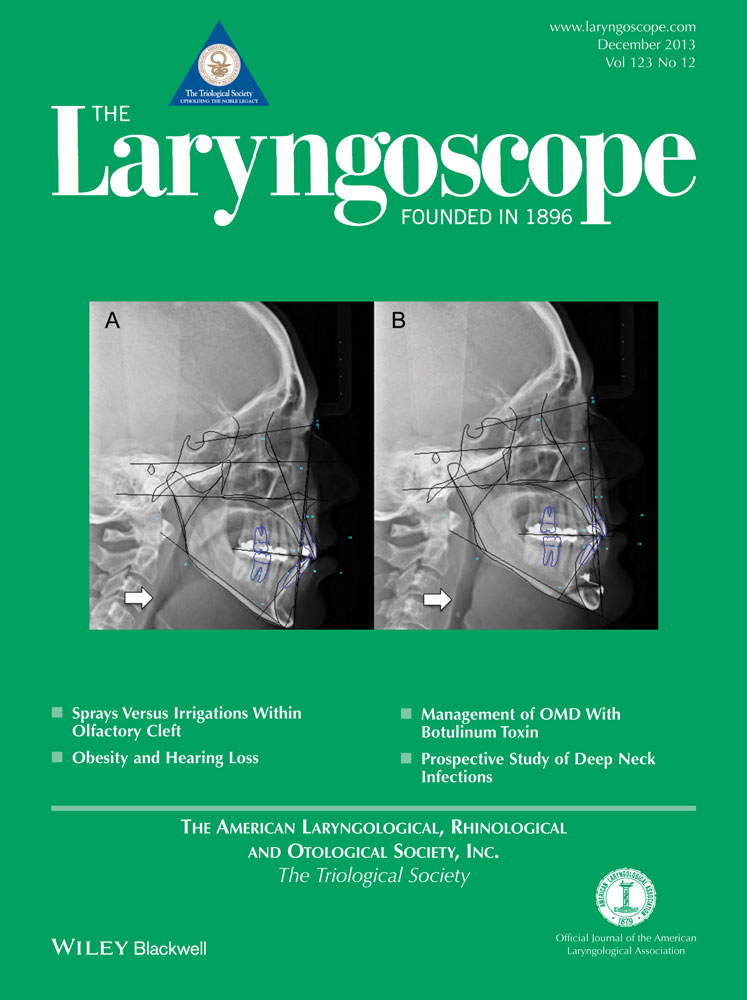Round window closure affects cochlear responses to suprathreshold stimuli
Supported by National Institute on Deafness and Other Communication Disorders (NIDCD) 1R01DC010154 (B.H.H.). The authors have no other funding, financial relationships, or conflicts of interest to disclose.
Abstract
Objectives/Hypothesis
The round window acts as a vent for releasing inner ear pressure and facilitating basilar membrane vibration. Loss of this venting function affects cochlear function, which leads to hearing impairment. In an effort to identify functional changes that might be used in clinical diagnosis of round window atresia, the current investigation was designed to examine how the cochlea responds to suprathreshold stimuli following round window closure.
Study Design
Prospective, controlled, animal study.
Methods
A rat model of round window occlusion (RWO) was established. With this model, the thresholds of auditory brainstem responses (ABR) and the input/output (IO) functions of distortion product otoacoustic emissions (DPOAEs) and acoustic startle responses were examined.
Results
Round window closure caused a mild shift in the thresholds of the auditory brainstem response (13.5 ± 9.1 dB). It also reduced the amplitudes of the distortion product otoacoustic emissions and the slope of the input/output functions. This peripheral change was accompanied by a significant reduction in the amplitude, but not the threshold, of the acoustic startle reflex, a motor response to suprathreshold sounds.
Conclusions
In addition to causing mild increase in the threshold of the auditory brainstem response, round window occlusion reduced the slopes of both distortion product otoacoustic emissions and startle reflex input/output functions. These changes differ from those observed for typical conductive or sensory hearing loss, and could be present in patients with round window atresia. However, future clinical observations in patients are needed to confirm these findings.
Level of Evidence
N/A. Laryngoscope, 123:E116–E121, 2013




